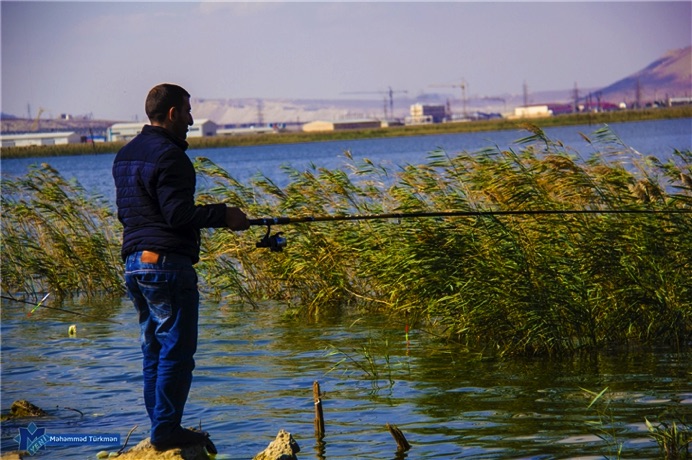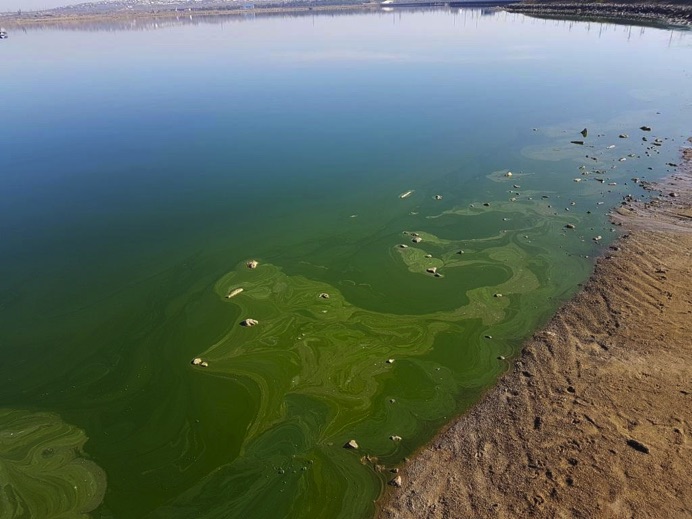There are over 200 lakes in the Absheron Peninsular in Azerbaijan, located near the capital of Baku. For years, industrial and household wastewater has been dumped into these waters–an estimated 41.5 million cubic meters annually! This includes discharges from many of the oil fields surrounding the area. Pollutants have also seeped into the lakes through contaminated groundwater. Now, Pure Earth and the local government are taking steps to stop and reverse the damage.
 Rovshan Abbasov (second from right), Pure Earth’s country coordinator in Azerbaijan, with 2 local officials at the water conference.
Rovshan Abbasov (second from right), Pure Earth’s country coordinator in Azerbaijan, with 2 local officials at the water conference.
Rovshan Abbasov, Pure Earth’s country coordinator in Azerbaijan, recently shared the results of Pure Earth’s investigations of the lakes at a recent conference on water and sustainable development organized by UNDP, GEF and local organizations.
As part of the global Toxic Sites Identification Program, Pure Earth experts conducted assessments of 15 lakes, collecting and analyzing samples. The investigation confirmed high-level pollution with oil products, VOCs, PAHs, and heavy metals.
Boyukshor, Khojohasan, Binigadi, Girmizigoller, Lokbatan, Zabrat, Bulbula, Zig and Gu were found to be the most contaminated lakes.
The impact of this pollution? More than one million people at high risk of exposure to toxic pollution in the Baku area. The pollution has caused soil degradation, salinization, and emission of harmful substances into the atmosphere as a result of evaporation.
In Sabunchu and Balakhani, which are located 3 to 4 km from Boyukshor lake, you can smell and see the pollution.
These two communities are surrounded by oil fields, which have been in operation since the 19th century. During the first 50 years of production, methods were very basic and primitive. About 25% to 30% of the extracted oil spilled onto the ground. The rest was collected and stored in small, open ponds.
Today, many of the hazards remain. Oil ponds are still located in between homes, and sometimes, residents scoop crude oil from the surface of the ponds to use in their homes, exposing them to toxic and carcinogenic compounds.
High temperatures cause oil evaporation, which can easily result in nitrate-based acid rains. The area is lifeless. There are no trees, plants or birds.
 A man fishing at a toxic lake. In nearby communities, residents live with poison every day.
A man fishing at a toxic lake. In nearby communities, residents live with poison every day.
The good news is that cleanup has begun. The government of Azerbaijan has already completed work on the east side of Boyukshor lake. Plans are underway to clean at least eight more of the most heavily contaminated lakes and transform them into recreational sites.
Related:
A Personal Story Of Pollution In Azerbaijan, And A Childhood Caught Between Polluted And Clean
A Toxic Beach in Azerbaijan Gets Cleaned Up, Solar Baths Become Safer










